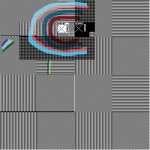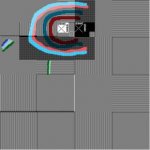- 3,657
- 27
- 48
- Location
- Dallas, Texas
suggestion: allow GIF image format for technical drawings, keep them in native format, do not downsample or convert to lossy JPEG.
A technical drawing to help a member might be complex (think radio set or VIC-1) and it may have features in the drawing or diagram that are 1 pixel wide. That's fine for electrical items. If the features are made too much bigger the X-Y size of a BMP or PNG file violates the data size limit. GIFs are much smaller
It is not helpful when a picture of a 27 pin connector needs all those pins explained in detail and someone has gone to the trouble to analyze the schematics for a complicated radio set like the RT-246, and label the pins of said connector as to what they do, and the uploaded GIF file gets sampled down to where the connector looks like it has dust bunnies.
I suggest that the GIF format be allowed for technical diagrams, and exempted from conversion and downsizing for the purpose of diagramming complicated things like drawings of radio connector pinouts, electronics, and the like. These kinds of things are important for members who want to do a little more than just buy the cables and hook it up stock.
It would be great if the .GIF format were:
1.) accommodated (currently it is not)
2.) allowed to be up to 1280x1024 regardless of data file size. -There won't be many.
3.) displayed in its native format and size so the user can see it correctly, or download it in its intended and legible form.
Am I right to think that no one except a dummy will use GIF for photos/pics because it is 256 colors and pictures would look bad? A GIF also consumes less data space per physical size than other formats.
If not, make a rule with a real consequence, once GIFs are freed. -GIFs to be used only for technical diagrams/drawings. or something..
other formats?
for the same file of an electrical diagram:
BMP 3MB
PNG 1M
GIF 140K
JPEG 175K and blurry
PDF? like a JPEG. It is a JPEG, a string of them, one for each page.
Vote yes for unmolested technical GIFs!
A technical drawing to help a member might be complex (think radio set or VIC-1) and it may have features in the drawing or diagram that are 1 pixel wide. That's fine for electrical items. If the features are made too much bigger the X-Y size of a BMP or PNG file violates the data size limit. GIFs are much smaller
It is not helpful when a picture of a 27 pin connector needs all those pins explained in detail and someone has gone to the trouble to analyze the schematics for a complicated radio set like the RT-246, and label the pins of said connector as to what they do, and the uploaded GIF file gets sampled down to where the connector looks like it has dust bunnies.
I suggest that the GIF format be allowed for technical diagrams, and exempted from conversion and downsizing for the purpose of diagramming complicated things like drawings of radio connector pinouts, electronics, and the like. These kinds of things are important for members who want to do a little more than just buy the cables and hook it up stock.
It would be great if the .GIF format were:
1.) accommodated (currently it is not)
2.) allowed to be up to 1280x1024 regardless of data file size. -There won't be many.
3.) displayed in its native format and size so the user can see it correctly, or download it in its intended and legible form.
Am I right to think that no one except a dummy will use GIF for photos/pics because it is 256 colors and pictures would look bad? A GIF also consumes less data space per physical size than other formats.
If not, make a rule with a real consequence, once GIFs are freed. -GIFs to be used only for technical diagrams/drawings. or something..
other formats?
for the same file of an electrical diagram:
BMP 3MB
PNG 1M
GIF 140K
JPEG 175K and blurry
PDF? like a JPEG. It is a JPEG, a string of them, one for each page.
Vote yes for unmolested technical GIFs!
Last edited:






